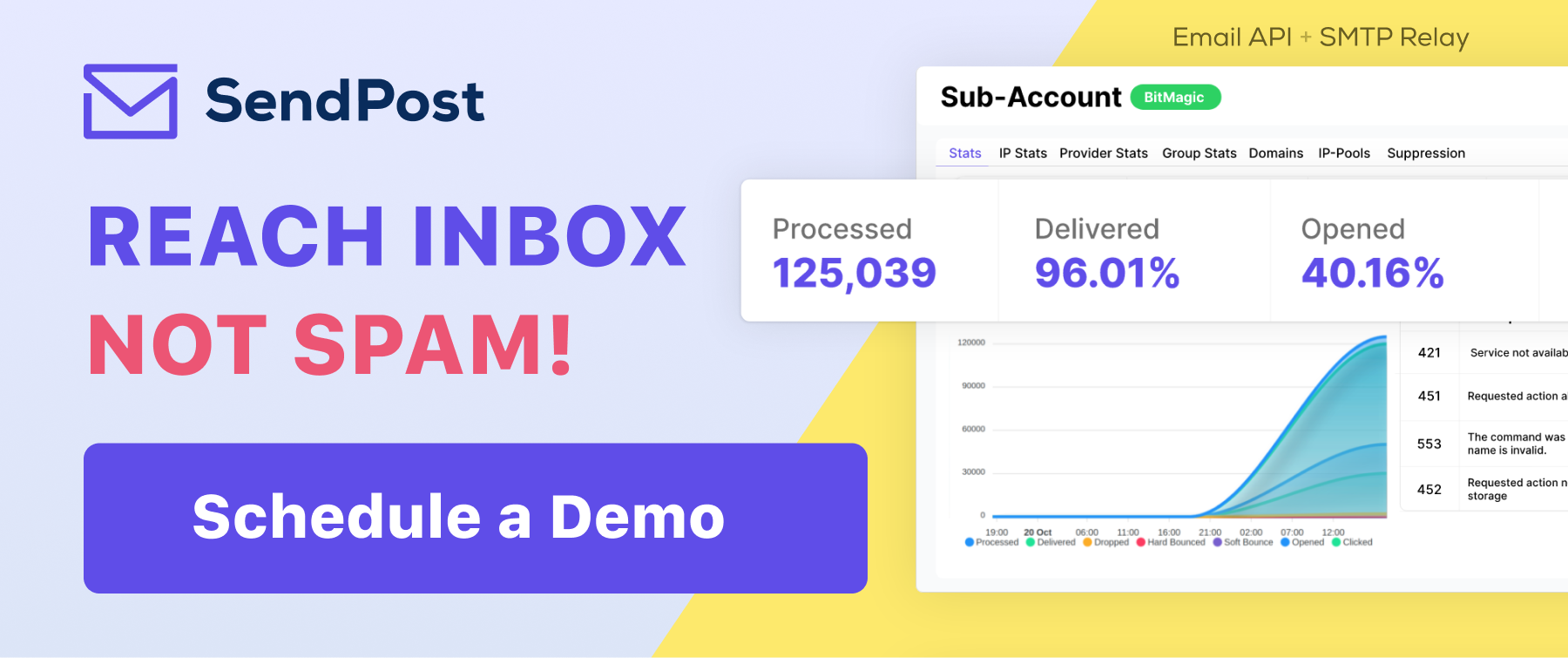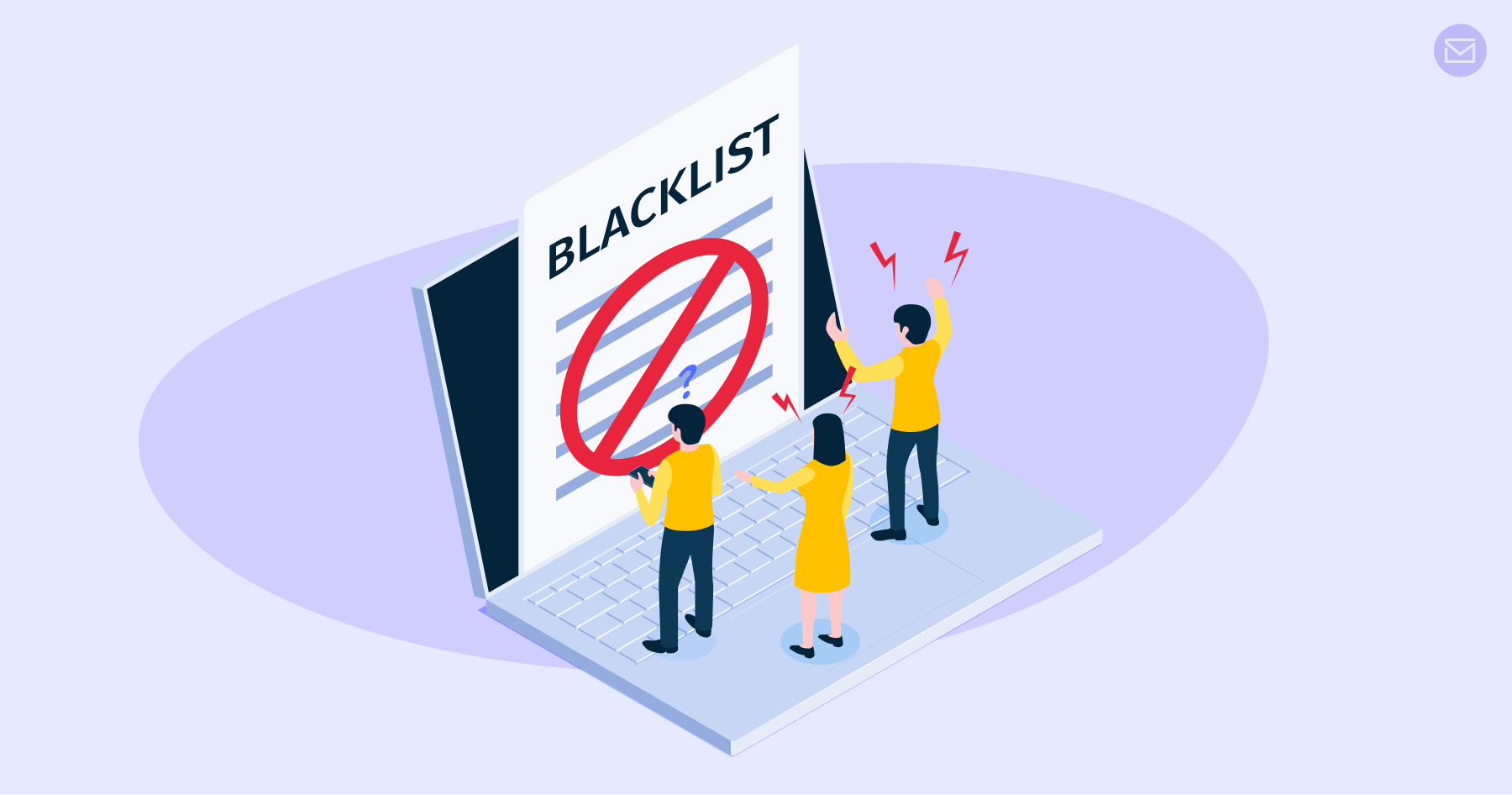SendPost Blog - Email API & SMTP
How to Improve Email Authentication for Transactional Emails

Sending transactional emails can be a tricky business, as we all know. With the rise in spam and phishing emails, it's more important than ever to make sure your emails are properly authenticated. This is not only to protect your recipients but also to ensure that your emails are delivered to the inbox and not the spam folder.
There are many challenges when it comes to email authentication, such as figuring out how to set up SPF and DKIM, or dealing with the constant changes in email client and ISP requirements.
That's why in this email, we will be discussing ways to improve email authentication for your transactional emails. We'll be covering topics such as setting up SPF and DKIM, understanding DMARC, and staying up-to-date on the latest email client and ISP requirements. By the end of this email, you'll have the tools and knowledge to improve the deliverability and protection of your transactional emails.
TL; DR: Read A Quick Summary Of 6 Things To Do To Authenticate Emails For Transactional Emails
- Use DMARC (Domain-based Message Authentication, Reporting & Conformance) to ensure that only authorized sources are allowed to send emails from your domain.
- Implement SPF (Sender Policy Framework) to validate the authenticity of the sender's domain.
- Use DKIM (DomainKeys Identified Mail) to sign and verify the authenticity of the email's content.
- Implement email encryption to protect email content from unauthorized access.
- Utilize email authentication services that can detect and prevent phishing and spoofing attempts.
- Regularly monitor your email logs and check for any suspicious activity.
Let's get into the details now.
6 Steps To Authenticate Your Emails For Sending Transactional Emails
Use DMARC (Domain-based Message Authentication, Reporting & Conformance)
DMARC is a way to make sure that only emails that are allowed to be sent from your company's email address are actually sent.
Here are some specific things you can do to set up DMARC:
- Ask your email service provider to set up DMARC for your company's email domain.
- Create a DMARC record and publish it in your domain's DNS (this is like a phonebook for the internet that tells other computers where to find your email server).
- Set up a policy for what should happen to emails that fail DMARC check (e.g. should they be rejected or sent to a specific email address for review).
It's like making sure only people with a special pass can enter a secret club. And you get to decide what happens to people who don't have the pass.
Implement SPF (Sender Policy Framework) to validate the authenticity of the sender's domain
SPF is a way to make sure that emails are really coming from the company they say they are coming from.
Here are some things you can do to set up SPF:
- Ask your email service provider to set up SPF for your company's email domain.
- Create an SPF record and publish it in your domain's DNS (this is like a phonebook for the internet that tells other computers where to find your email server).
- List all the servers that are allowed to send email on behalf of your domain in the SPF record.
- The SPF record should include IP addresses or hostnames of the authorized mail servers.
For example, if your company's email address is "info@mycompany.com" and you use "mail.mycompany.com" as your mail server, your SPF record might look like this:
"v=spf1 a mx ip4:XXX.XXX.XXX.XXX include:mail.mycompany.com -all"
It's like giving a list of friends that are allowed to pick up your child from school to the teacher. Only the people on the list are allowed to pick up your child, and anyone else will be stopped by the teacher.
Don't confuse DMARC and SPF. SPF is used to authenticate the sender's domain, while DMARC is used to authenticate the entire email message and provide a policy for handling messages that fail authentication.
Use DKIM (DomainKeys Identified Mail) to sign and verify the authenticity of the email's content
DKIM (DomainKeys Identified Mail) is like a special signature on your emails that makes sure they are really from you and that the content hasn't been changed.
Here's what you can do as a brand sending emails to your subscribers to set up DKIM:
- Ask your email service provider to set up DKIM for your company's email domain.
- Create a public and private key pair
- Add the public key to your domain's DNS
- Sign all outgoing email with the private key
- Enable DKIM on your email server to check the incoming email signature
For example, when you send an email to your subscriber from "brand@example.com", you sign the email using a private key that only you have.
When your subscriber receives the email, their email server will check the signature using a public key that is available in the DNS of example.com.
This way your subscribers can be sure that the email they are receiving is really from you and that the content hasn't been tampered with. It's like how you put your signature on a letter to show that it's really from you.
Implement email encryption to protect email content from unauthorized access
Email encryption is like putting a lock on your emails so that only the people you want to read them can see the content.
Here's what you can do as a brand sending emails to your subscribers to set up email encryption:
- Ask your email service provider if they offer encryption services
- Use encryption software to encrypt the content of your emails before sending
- Provide your subscribers with the key or password to decrypt the email
For example, when you want to send an email to your subscriber with sensitive information like a password or a credit card number, you use encryption to put a lock on the email.
You then give your subscriber the key to unlock the email, so they can read the content.
It's like how you put a lock on a box and give the key to the person you want to open it.
Encryption helps to protect the content of your emails from unauthorized access and to ensure that only the intended recipient can read the email.
It's also good to note that there are different types of encryption like S/MIME and PGP, it is important to do research and choose the one that best fits your needs.
Detect Phishing attempts
Phishing and spoofing are when bad people pretend to be someone else in order to trick you into giving them important information, like your password or credit card number.
Here's what you can do as a brand sending emails to your subscribers to protect them from phishing and spoofing attempts:
- Use email authentication services that can detect and prevent phishing and spoofing attempts.
- Educate your subscribers about phishing and spoofing attempts and how to identify them.
- Provide a way for subscribers to report suspicious emails, by providing a button or a link in your emails.
For example, let's say a bad person pretends to be your company and sends an email to your subscriber asking for their credit card number.
But with an email authentication service in place, it will check the email and detect that it's not really from your company and it will stop the email from reaching the subscriber.
It's like how a security guard checks people's ID before they enter a building to make sure they are supposed to be there.
These types of services are offered by many providers, it is important to check the features and pricing of each one to see which one is the best fit for your business.
Monitor your logs
As a brand sending emails to your subscribers, it's important to keep an eye on what's going on with your emails to make sure everything is okay.
Here's what you can do:
- Regularly check your email logs to see who is sending and receiving emails from your domain.
- Look for any suspicious activity like a lot of emails being sent from an unusual location or a lot of emails being sent to one person.
- Keep an eye out for any bounced emails or emails that were marked as spam.
There are also many log analysis services that can help you to detect any suspicious activity, some of them are free, some of them are paid. You can check the features and pricing of each one to see which one is the best fit for your business.
It's also a good practice to set up alerts that notify you when something unusual happens with your emails, this way you can take action as soon as possible.
Take Proactive Action
In conclusion, email authentication is an ongoing process and requires constant attention to ensure the security and authenticity of your emails. As a brand sending emails to subscribers, it's important to take proactive measures to protect your email communications from phishing and spoofing attempts.
Consider investing in a specialized email software service such as SendPost. It can help you identify and prevent issues, and make your email sending process more efficient. Take a moment to reflect on your current email authentication practices and think about how you can improve them. Remember, a small drop in your email open rate or delivery can have a significant impact on your revenue. So, take action today to ensure the authenticity of your emails and protect your business.








